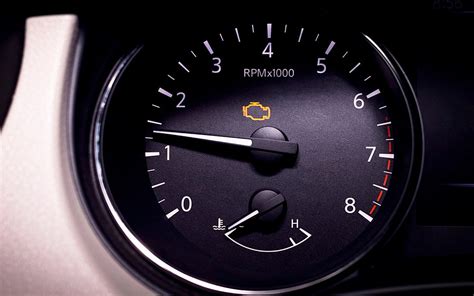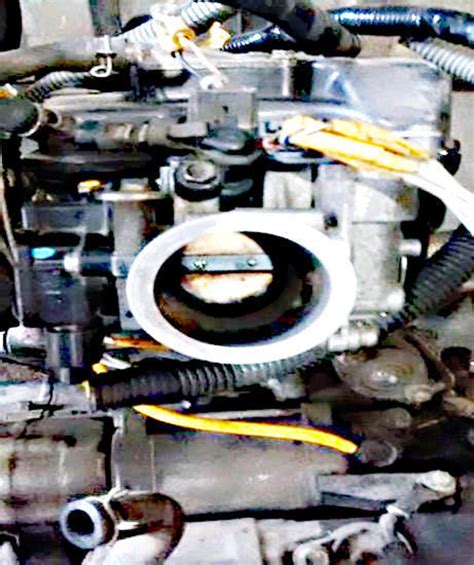What Is Engine Idling

Engine idling refers to the practice of keeping a vehicle's engine running while the vehicle is stationary. It is a common phenomenon and a topic of interest due to its environmental, economic, and societal implications. Understanding engine idling is crucial as it impacts fuel consumption, air quality, and overall vehicle performance.
The Basics of Engine Idling

When a vehicle’s engine is idling, it means the engine is running but the vehicle is not in motion. This occurs when the driver leaves the engine running, often to warm up the car, to run a quick errand, or to avoid turning off the air conditioning or heating system. Idling can happen at various points during a vehicle’s operation, such as at stoplights, in parking lots, or while waiting to pick someone up.
Factors Affecting Idling
The duration and frequency of engine idling can vary based on several factors, including:
- Climate: Idling is more common in colder regions where drivers may leave their engines running to warm up the vehicle’s interior.
- Vehicle Type: Larger vehicles, such as trucks and SUVs, tend to idle more frequently due to their size and engine capacity.
- Driver Behavior: Personal preferences and habits play a significant role in idling practices. Some drivers may be more inclined to leave their engines running while others prefer to turn them off.
The Impact of Engine Idling

Engine idling has a range of effects on various aspects of vehicle operation and the environment.
Fuel Consumption and Costs
One of the most significant impacts of idling is increased fuel consumption. When a vehicle is idling, it burns fuel without any corresponding motion, leading to inefficient fuel usage. A study by the Environmental Protection Agency (EPA) revealed that idling can consume up to a quarter of a gallon of fuel per hour, depending on the vehicle’s engine size and age.
| Vehicle Type | Fuel Consumption per Hour (Gallons) |
|---|---|
| Small Car | 0.1 - 0.2 |
| Mid-Size Car | 0.2 - 0.3 |
| SUV/Truck | 0.3 - 0.4 |

Over time, excessive idling can result in significant fuel costs for drivers, especially with rising fuel prices. It's estimated that idling wastes billions of gallons of fuel annually, contributing to higher expenses for vehicle owners.
Environmental Effects
Engine idling has detrimental effects on the environment, primarily due to the emission of pollutants during the idling process. These emissions include carbon monoxide, nitrogen oxides, and particulate matter, which contribute to air pollution and have adverse effects on human health and the ecosystem.
According to the World Health Organization (WHO), exposure to these pollutants can lead to respiratory issues, cardiovascular diseases, and other health complications. Additionally, the release of greenhouse gases during idling contributes to climate change, further emphasizing the need to reduce idling practices.
Vehicle Performance and Maintenance
Idling can also impact a vehicle’s performance and overall maintenance. Prolonged idling can lead to carbon buildup in the engine, affecting its efficiency and potentially causing issues such as clogged fuel injectors or reduced engine power. It can also strain the vehicle’s battery, as the engine needs to work harder to maintain electrical systems while idling.
Reducing Engine Idling
Given the negative impacts of engine idling, there are several strategies to reduce idling practices and promote more sustainable and efficient vehicle use.
Driver Education
Educating drivers about the consequences of idling can be an effective way to encourage behavior change. Awareness campaigns and educational initiatives can highlight the environmental, economic, and health benefits of reducing idling. Providing clear guidelines on when it’s appropriate to idle and offering alternatives can empower drivers to make informed choices.
Idling Reduction Technologies
Advancements in automotive technology have led to the development of idling reduction technologies, such as automatic engine stop-start systems. These systems automatically shut off the engine when the vehicle is stationary and restart it when the driver is ready to move. This technology has been shown to significantly reduce fuel consumption and emissions during idling periods.
Policy and Regulation
Government policies and regulations can play a crucial role in reducing engine idling. Implementing anti-idling laws and regulations, especially in urban areas and at commercial establishments, can help minimize unnecessary idling. Enforcing these regulations and providing incentives for businesses and individuals to adopt idling reduction practices can contribute to a more sustainable transportation sector.
Conclusion: A Sustainable Approach
Engine idling is a prevalent practice with far-reaching consequences. By understanding the impacts of idling on fuel consumption, the environment, and vehicle performance, we can adopt more sustainable practices. Through a combination of driver education, technological advancements, and supportive policies, we can work towards reducing engine idling and creating a greener, more efficient transportation system.
Is it better to turn off the engine or let it idle at a stoplight?
+Turning off the engine is generally more fuel-efficient and environmentally friendly than idling at a stoplight. Modern engines are designed to be efficient when restarting, and the fuel saved by turning off the engine for short periods can outweigh the benefits of keeping it running.
What are the health impacts of engine idling?
+Engine idling emits pollutants such as carbon monoxide, nitrogen oxides, and particulate matter. Prolonged exposure to these pollutants can lead to respiratory issues, cardiovascular diseases, and other health complications. Children, the elderly, and individuals with pre-existing health conditions are particularly vulnerable to the effects of air pollution from idling vehicles.
How can businesses reduce idling at their establishments?
+Businesses can implement anti-idling policies and educate their staff and customers about the environmental and economic benefits of reducing idling. Providing clear signage and offering incentives for drivers to turn off their engines can help create a culture of sustainable practices.

